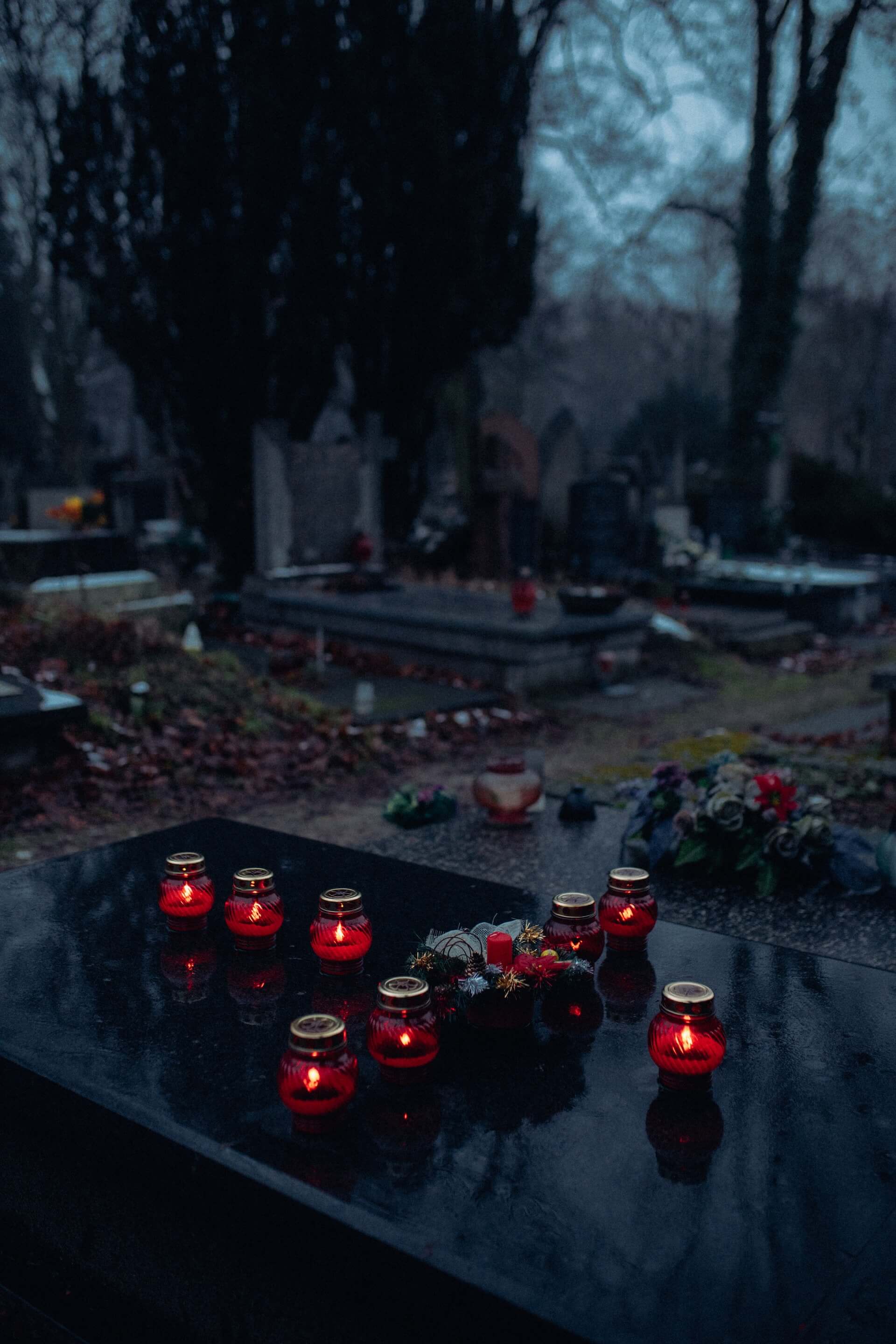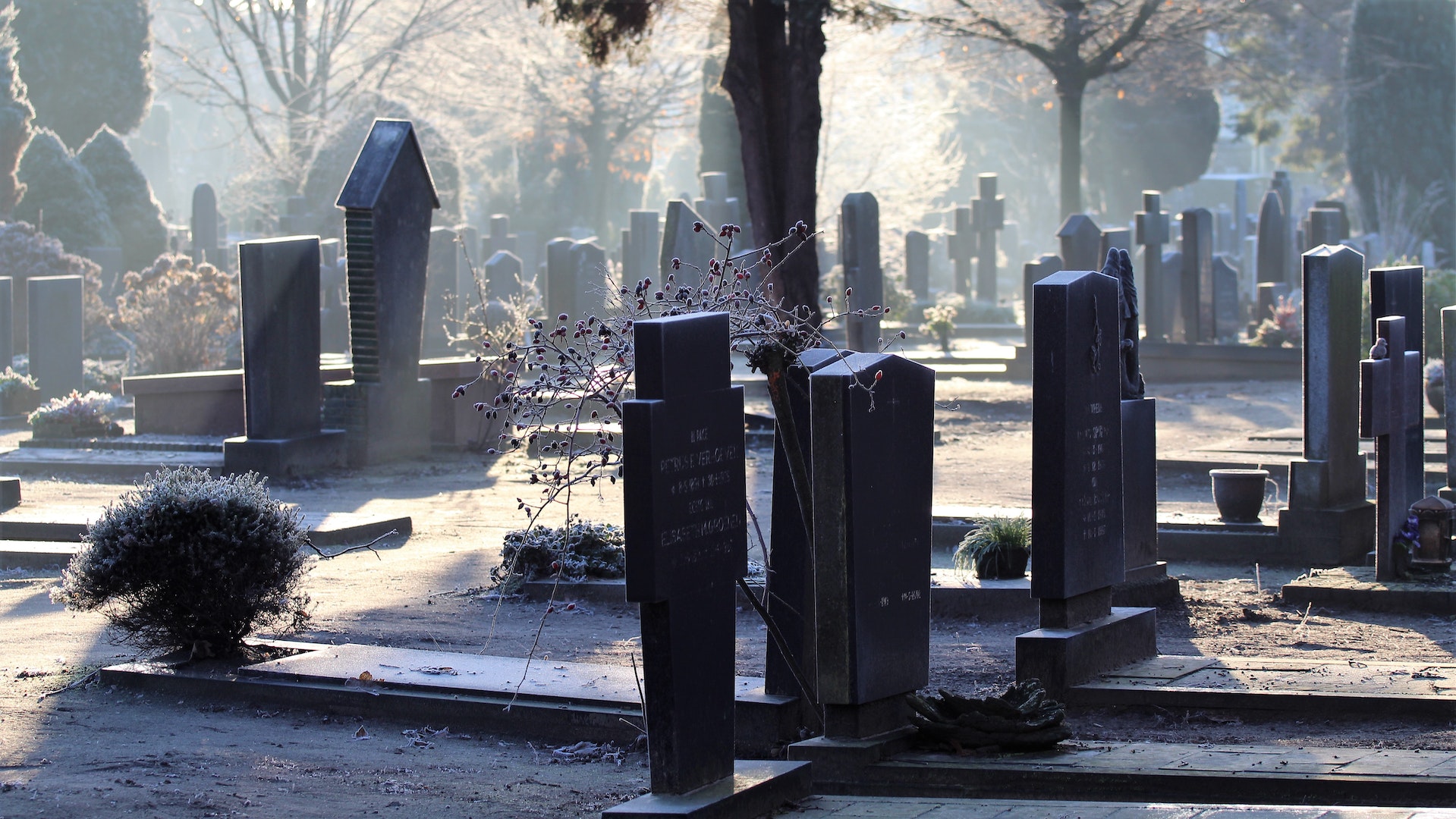
All Saints' Day & All Souls' Day
Über den Ursprung und die Geschichte
Dicke Nebelschwaden. Grauer Horizont. Und karger werdende Bäume, deren letzte Blätter sich im Wind wiegen. Der November ist ein Meister im Kreieren melancholischer Stimmungen. Für viele ist er daher der tristeste Monat – dann, wenn die bunten Farben des Oktobers allmählich verblassen, der Zauber der Vorweihnachtszeit aber noch nicht in der Luft liegt.
Dass mit dem November oft im wahrsten Sinne des Wortes trübe Tage einhergehen, hat aber auch mit gewissen Bräuchen und Traditionen zu tun, die Katholiken zu dieser Jahreszeit seit Jahrhunderten feiern: Allerheiligen und Allerseelen. Sie setzen sich bewusst mit Themen wie Abschied und Trauer, aber auch positiven Erinnerungen auseinander. Doch wo haben diese christlichen Feiertage ihren Ursprung? Was unterscheidet sie? Und was hat das mit Halloween zu tun? Wir gehen der Sache auf den Grund.
Allerheiligen: Ein Feiertag mit langer Geschichte
„Allerheiligen“ und „Allerseelen“ – diese Begriffe verwenden Katholiken im Alltag ganz selbstverständlich. Viele sind sich jedoch gar nicht ihrer Bedeutung und ihres Ursprungs bewusst. Dabei gibt allein ihre Bezeichnung bei genauerer Betrachtung schon Aufschluss darüber, wofür sie stehen und was an diesen Feiertagen gemacht werden sollte: An Allerheiligen wird – wie der Name schon verrät – aller Heiligen gedacht. Wir ehren also Verstorbene, erinnern uns im Gebet an sie und denken anerkennend an sie zurück. Und dabei waren es anfangs – daher auch der Name – ausschließlich Heilige, die wir ehrten.
Ganz konkret: Märtyrer mit außerordentlicher Glaubenskraft, die ihr Leben Gott gewidmet hatten und heiliggesprochen wurden. Diese hatten zu Beginn eigene Gedenktage. Doch weil es über die Jahre hinweg immer mehr Heilige gab und die 365 Tage eines Jahres nicht mehr ausreichten, fasste man sie kurzerhand an einem Datum zusammen. Dieses „Festum omnium sanctorum“, also das Fest der Heiligen, wie es auf Latein heißt, reicht zurück bis ins vierte Jahrhundert. Ursprünglich wurde es am ersten Sonntag nach Pfingsten gefeiert, ab dem siebten Jahrhundert dann am Freitag nach Ostern, um den Zusammenhang zwischen dem österlichen Heilsszenario und dem Leben und Wirken der Heiligen zu verdeutlichen.
Von den Märtyrern zu verstorbenen Gläubigen
Im neunten Jahrhundert verlegte Papst Gregor IV. den Gedenktag schließlich auf den 1. November – und zwar aus einem simplen und praktischen Grund: Im Herbst, zur Erntezeit, hatten die Menschen mehr Nahrung parat, um das Fest zu feiern. Aber auch die Jahreszeit passte zur Symbolik, denn die sichtbare Vergänglichkeit der Natur sensibilisiert Menschen seit jeher für die Vergänglichkeit der irdischen Welt.
Und öffnet damit den Blick für das große Danach. Und noch eine Änderung fand damals statt: Künftig sollten auch die Bekenner – und damit nicht mehr nur ausschließlich Märtyrer – im Fokus dieses Ehrentages stehen. In der Orthodoxen Kirche wird Allerheiligen übrigens nach wie vor am ersten Sonntag nach Pfingsten gefeiert. In der evangelischen Glaubensgemeinschaft gibt es hingegen keine Heiligsprechungen, sondern als „Heilige“ werden Personen bezeichnet, die in Bezug auf ihren Glauben und ihr Leben für andere Vorbilder sind. Über die Jahre hinweg hat sich die Auslegung dieses Feiertages auch bei den katholischen Christen etwas verändert.
So stehen heute vielerorts verstorbene Familienangehörige im Mittelpunkt des Gedenktages, also ganz generell Verstorbene – und damit haben sich die beiden Feiertage „Allerheiligen“ und „Allerseelen“ ein Stück weit vermischt, wie Sie gleich feststellen werden. Katholiken beginnen Allerheiligen übrigens traditionell mit einer heiligen Messe und spazieren dann zum Friedhof. Dort werden die Gräber geschmückt, Kerzen angezündet und es wird für die Verstorbenen gebetet.
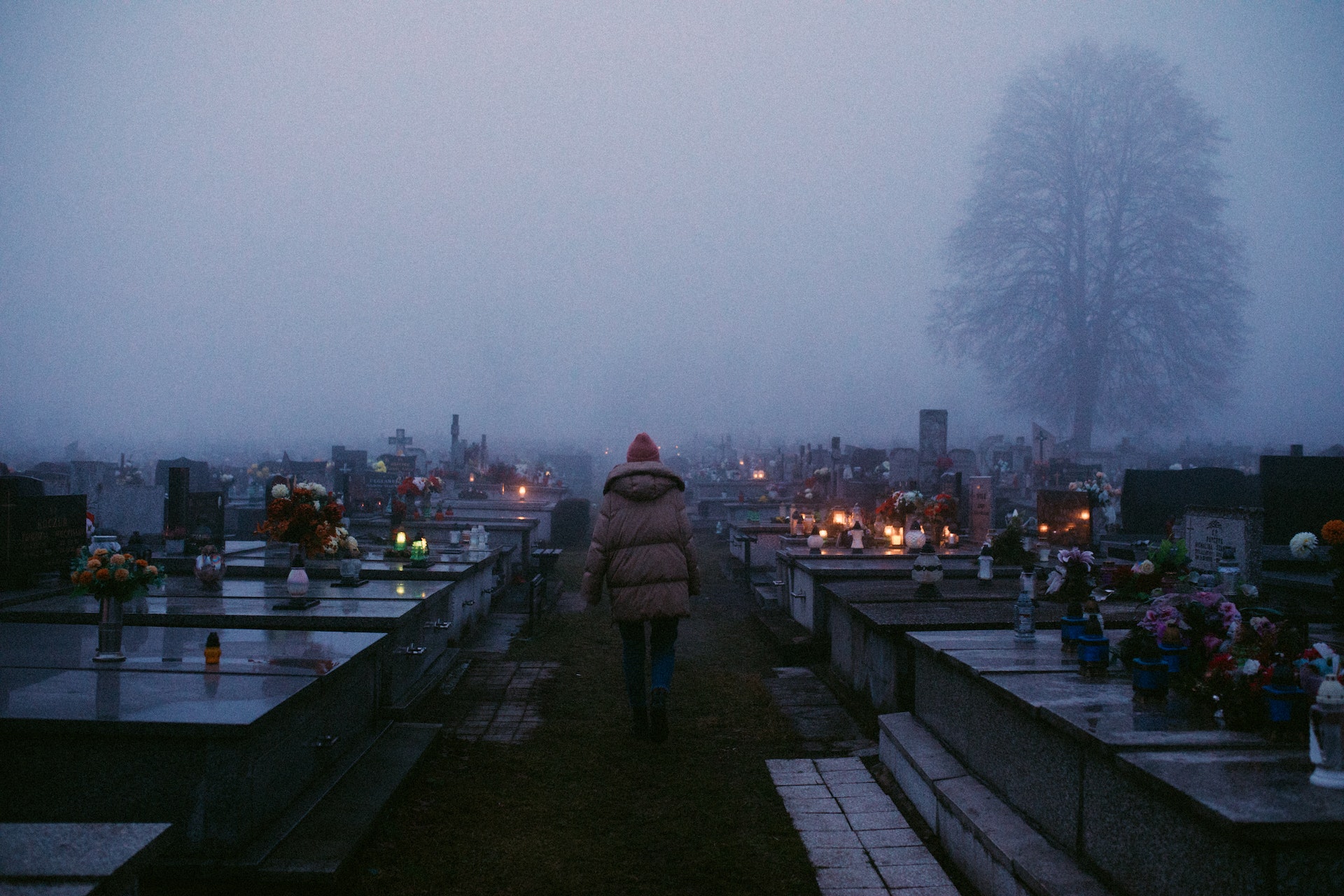
Allerseelen: Beten für arme Seelen
Einen Tag danach, am 2. November, wird Allerseelen gefeiert. Dieser Gedenktag besteht seit 998 und hat seinen Ursprung im französischen Benediktinerkloster Cluny, wobei es Vermutungen gibt, dass dieses Fest zuvor bereits in Spanien gefeiert wurde. Wie der Name verrät, geht es hierbei um alle Seelen, das heißt, es wurde von Anfang an aller gläubigen Verstorbenen gedacht.
Dabei soll das Gebet dazu dienen, dass deren Seelen nach dem Tod von Gott im Himmel aufgenommen werden – für das ewige Leben. Denn der katholischen Lehre nach gibt es ein Leben nach dem Tod – allerdings nur für die Seele, die Körper Verstorbener bleiben auf der Erde zurück. Auf dem Weg in den Himmel müssen diese Seelen jedoch durch das Fegefeuer – und hierbei sollen Gebete helfen, dass sie diese Etappe schneller hinter sich lassen und schließlich die Gemeinschaft mit Gott erreichen.
Früher hielt sich auch der Aberglaube, die armen Seelen stiegen in der Nacht von Allerheiligen auf Allerseelen aus dem Fegefeuer auf, um sich ein paar Stunden lang von den Qualen, die sie dort erlitten, erholen zu können. Allerseelen umweht daher ein mystisches Schaudern.
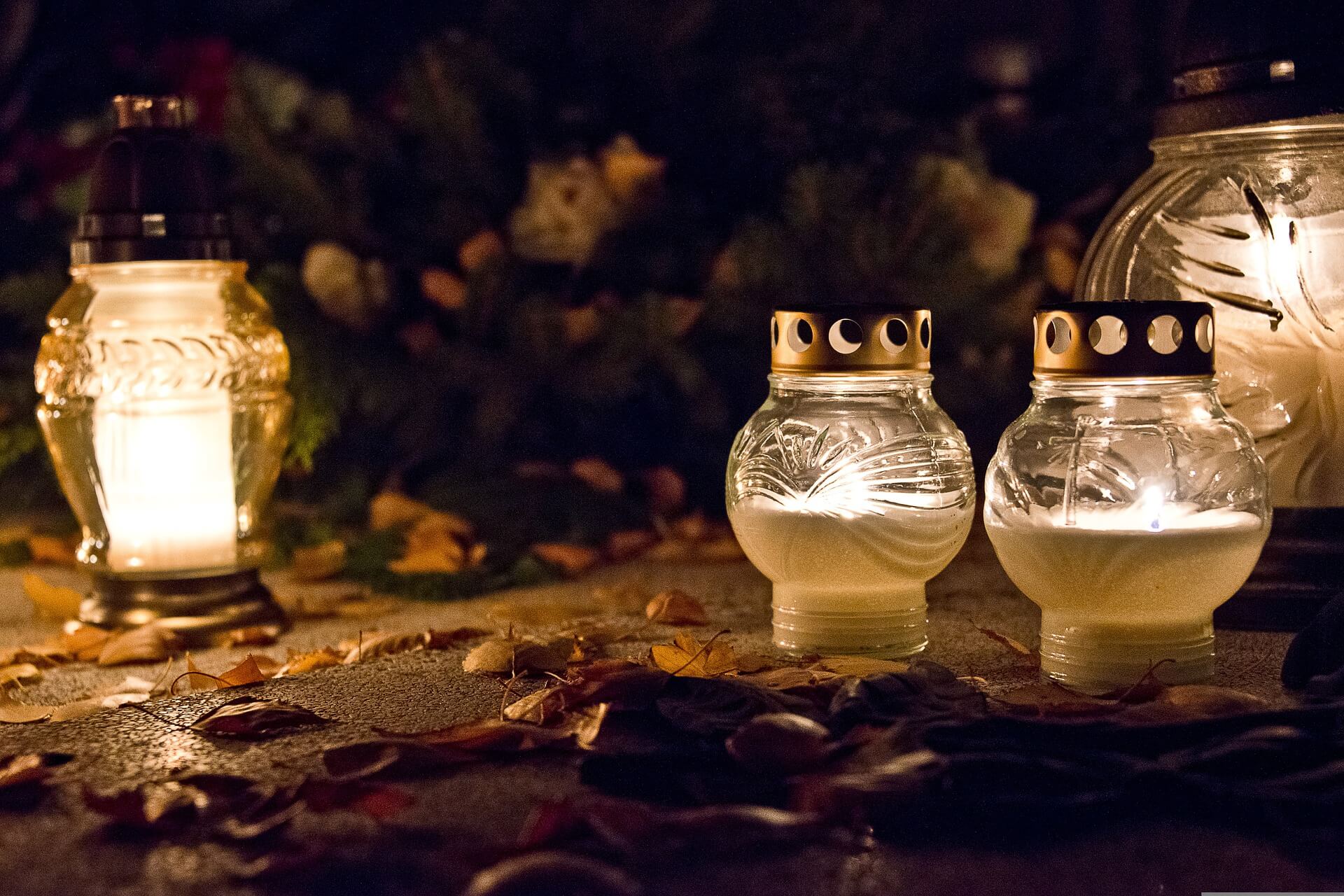
Aus „All Hallow’s Eve“ wird „Halloween“
Apropos mystisch: Am Abend und in der Nacht vom 31. Oktober auf den 1. November wird vielerorts Halloween gefeiert. Früher bezeichnete man diese Zeitspanne ganz simpel als „All Hallows‘ Eve“, also den Abend vor Allerheiligen. Später wurde daraus das heutige „Halloween“.
Und das stammt nicht – wie viele vermuten – aus Amerika, sondern ist ein europäischer Brauch. Die katholischen Iren waren es, die Halloween erstmals feierten und sich dabei einiger Riten des keltischen Winterfests Samhain bedienten. Iren, die später in Amerika sesshaft wurden, haben das Fest dort in Erinnerung an ihre Heimat neu aufleben lassen.
Seit ein paar Jahren wird es weltweit gefeiert, wobei der ursprüngliche Hintergrund des Festes weitgehend in Vergessenheit geraten ist und Kommerz und Konsum die Feierlichkeiten prägen.
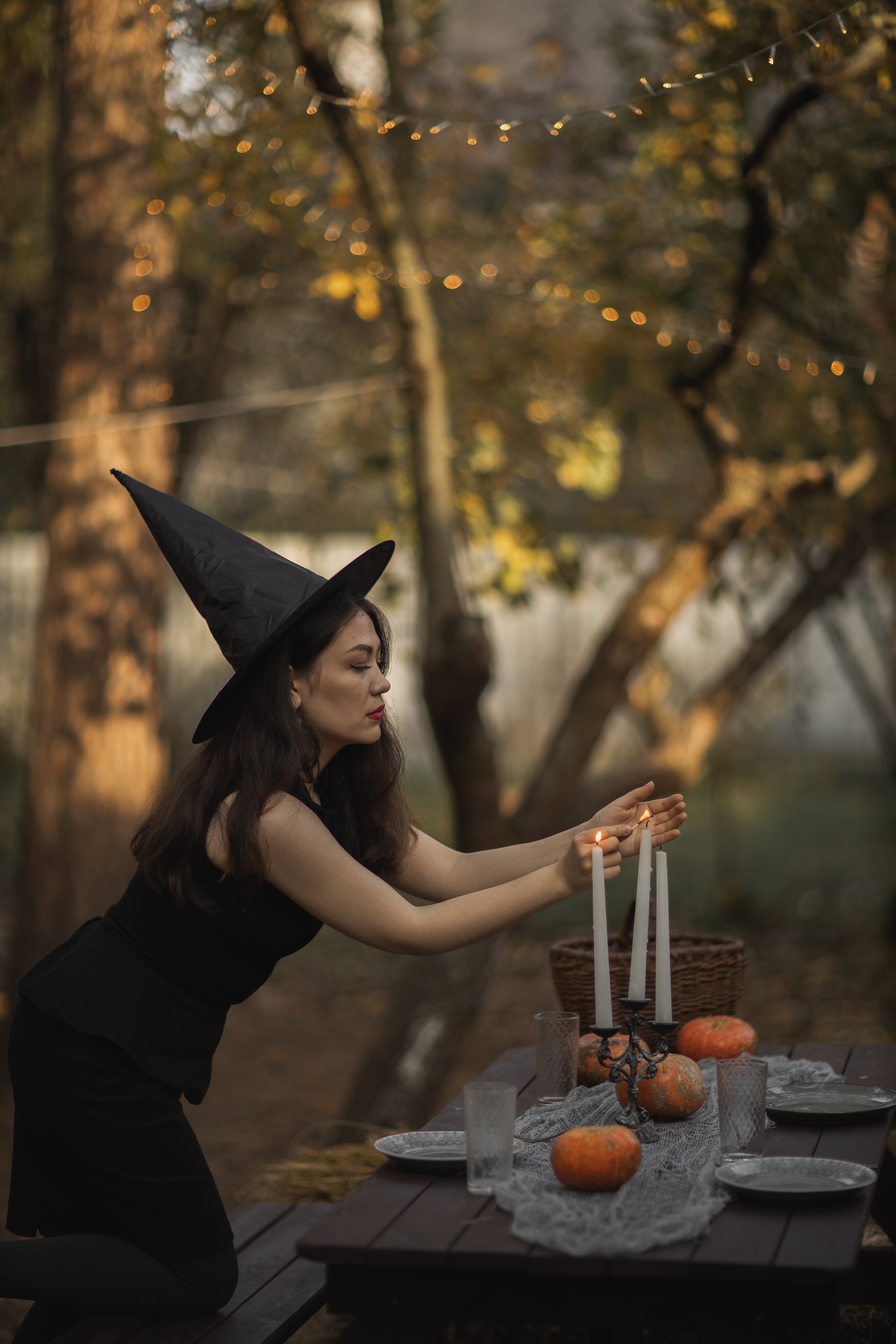
In Gedenken an verstorbene Herzensmenschen
Das Sich-Erinnern an geliebte, verstorbene Herzensmenschen und -tiere ist auch ein wichtiger Bestandteil unseres Tuns bei Mevisto.
Unser Leitsatz lautet daher: Wir wollen Menschen in Trauer helfen. Und daher fertigen wir seit 2013 einzigartige Schmuckstücke, die Menschen auf ihrem individuellen Weg begleiten, stärken und sie an ihre Liebsten erinnern.
Nicht nur an Allerheiligen oder Allerseelen. Sondern jeden Tag.
